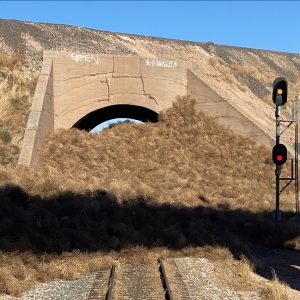 Do Trains Use Pesticides seems like an odd question, or the start to a strange Thomas the Train episode. Perhaps the better question is do the railways in this country utilize pesticides and is there a group that represents them. Given my travels out of the office this week, we will dive into that question, Do Trains Use Pesticides.
Do Trains Use Pesticides seems like an odd question, or the start to a strange Thomas the Train episode. Perhaps the better question is do the railways in this country utilize pesticides and is there a group that represents them. Given my travels out of the office this week, we will dive into that question, Do Trains Use Pesticides.
There are approximately 160,000 miles of rail in the United States. This is the largest rail network in the entire world. There is freight rail in all but one of the states, with Hawaii being the only to shunt the caboose. Clearly that’s a lot of area, but how do pesticides come into play? Last I checked we don’t grow corn on railroad tracks!
One of the primary ways pesticides are used for trains is the use of herbicides to keep vegetation off and away from the rail line. Vegetation must be kept away from the rails to ensure:
- Proper function of the train
- Proper drainage of the rail bed
- Brush/trees don’t impeded rail cars
- Clear line of sight for engineers and for public at crossings
- Fire control
Having a clear railbed ensures proper maintenance and inspection can be performed. It also ensures that nothing impedes the movement of the train. Yes, trains can be stopped by vegetation as happened in this picture where the tumbleweeds were just too thick.
What can go wrong?


Keeping weeds clear from the rails also ensures that fires don’t break out. A single spark, from metal wheels on metal track, could spell disaster. Additionally keeping the rail bed weed free ensures water flows properly and does not wash out the railbed or create standing puddles of water. Proper weed management limits such scenarios. Traveling by rail can be fantastic, but imagine the chaos if trees and bushes smacked the trains, or poked out windows. So yes, herbicides must be used to maintain a proper right of way for the trains.
It’s not just weeds around the rails that involve pesticides, the railroad ties themselves are treated to ensure stability. Most railroad ties are treated with creosote products, which reduce fungus, termites, and all types of pests that could cause the ties to rot. Rotted rail ties would create major safety issues, as derailed trains can cause major damage.
In addition to controlling weeds around the rails, many of those who work in this industry also help with invasive species management. By keeping the rails clear of invasive species, including the invasive Kochia tumbleweed, they can help limit the spread. A rail line would be a perfect corridor for moving these invasive species. There are other examples, but by spotting, treating, and even notifying local officials about the presence of invasive species, railroad contractors can limit their spread.
Conclusion
This blog was inspired by my traveling this week to Muncie, Indiana to help train over 200 contractors that work in vegetation management on the rails. The National Railroad Contactors Association is a great group full of some of the most innovative weed managers out there. They were a very attentive audience eager to ensure they have the most up to date information about safety, efficacy, and trends in weed management. They all had some great stories, and are one of my favorite groups to help train.
So there we have it, we can now answer Do Trains Use Pesticides? YES, and thank goodness they are well trained and eager to ensure our 160,000 miles of rail in this country can move the goods and services that keep this country moving. So next time you see a train, give a hearty nod and loud CHOO CHOO to the hard working men and women that keep the wheels turning and the rails a little safer.
Subscribe
 5
5
